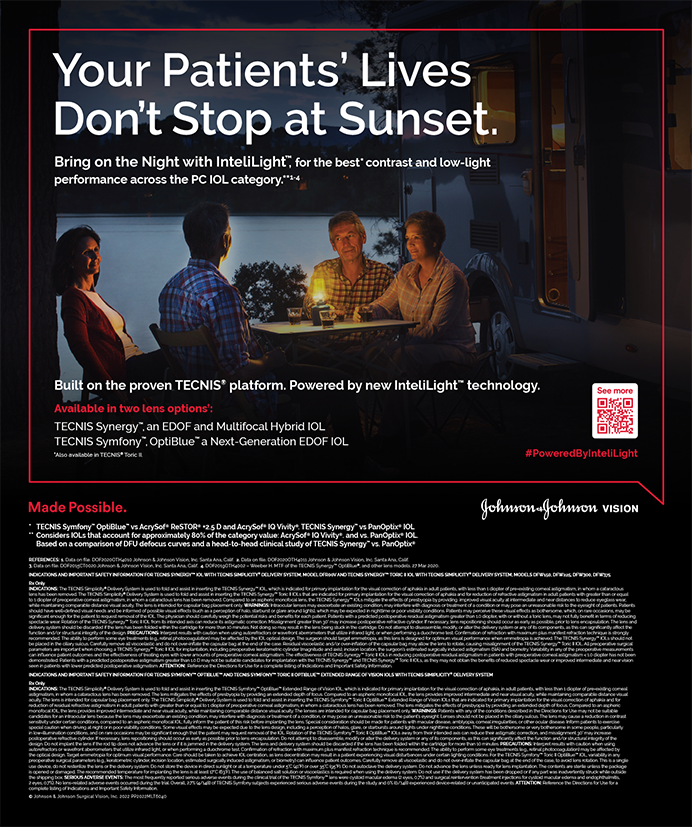All too often I read and hear about how patients are increasingly demanding perfection. Demanding so much, in fact, that anything less than perfection in regard to their vision is simply unacceptable. How far we have come! Only 3 decades ago, my grandfather underwent cataract extraction without lens implantation. He spent several days in the hospital and had the privilege of wearing aphakic spectacles until the age of 95. I am certain he was simply happy to be able to see.
Today, the expectations of both patients and surgeons consist of exceptional uncorrected distance acuity in most every conceivable circumstance. If the result is less than satisfactory, the patient and his or her family members will be searching for explanations as to why the glass is half empty. I think it is safe to say that complications associated with cataract and implant surgery will remain until medical science cures cataract formation with pharmacological or genetic engineering solutions. Until that day arrives, however, we collectively must contribute our efforts to those that have already been made to successfully reduce intraoperative and postoperative complications rates. Just think of what we have accomplished in minimizing iatrogenic complications over the past 25 years. Reducing incision size has essentially eliminated marked amounts of induced astigmatism. Switching to extracapsular surgery has massively reduced the rates of cystoid macular edema. Intraocular lens implantation has eliminated unwanted optical effects such as pincushion distortion and reduction in peripheral vision that aphakic spectacles produce. Pharmacologic advancements have helped literally all phases of the surgical process, from preoperative preparation to remote complications. Intraocular lens design advancements have led to the development of improved biocompatible materials, and lowered rates of posterior capsule opacification. Is it any wonder expectations have risen to such a high level?
In this issue of Cataract & Refractive Surgery Today, we are fortunate to have several exceptional surgeons convey their experience and solutions for complications management and prevention in cataract surgery. If the adage “An ounce of prevention is worth a pound of cure“ applies, our contributors' pointers should substantially benefit every surgeon's prevention arsenal. Complications with cataract surgery or any surgery is an issue that must be dealt with, and requires mature understanding. The incremental advances that have helped to reduce cataract surgery complication rates have been led by surgeons, investigators, and industry scientists who are simply unsatisfied with the status quo. To those individuals who are never satisfied with a process until the glass is completely full, we all must be thankful. Therefore, in an effort to make the most successful surgical procedure even more so, please enjoy this month's contributions.


